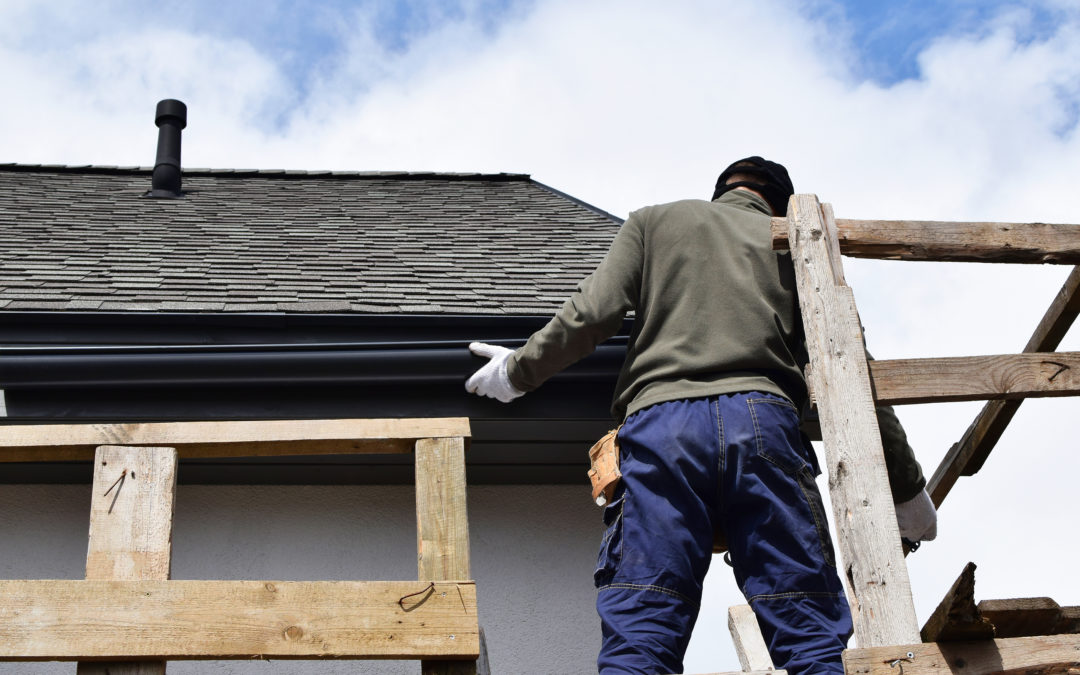Roofing includes way more than just the shingles you see. There are many components that go into a good roof, and if any of them is lacking, you end up with leaks or worse. Something most people overlook is flashing. It’s integral to waterproofing the roof, but how much do you really know about it? Let’s take a look.
What Is Flashing?
Simply put, flashing is the material that blocks water at joints and points of vulnerability on a roof. It is typically made of a thin, malleable sheet of metal. You’ll find flashing around chimneys, vents, and any place where the continuity of the roofing is interrupted.
There are several different types of flashing, each with a specific purpose. Flashing designed for the base of a chimney isn’t quite the same as flashing for a valley. Each type of flashing serves a specific function, so the design of the roof will dictate which flashing should be used at any given point. Here are several types:
1. Continuous
Continuous flashing, sometimes called “apron flashing,” consists of a single, long sheet of metal. It is designed to route the water down to the shingles, and if it gets long enough, it might need expansion joints to make it fit the contours it is covering.
2. Base
Base flashing, as the name implies, goes at the base of a protrusion. The most common example is a chimney. Basically, base flashing needs two pieces of metal to conform to the shape. It can then direct the water downward, away from the exposed part of the roof. By using two pieces, the flashing is more resistant to expansion and contraction that comes with hot or cold weather.
3. Counter
Counter flashing is the upper part of a two-part system. It sits on top of the base flashing to make sure water can’t get behind that layer.
4. Step
Step flashing involves bending the metal at a 90-degree angle. It is typically used where the roof meets a wall. You can see how the bend can conform to the joining wall and roof in order to direct water away. In order to keep step flashing tight, roofers usually employ multiple layers of the material.
5. Skylight
The name says it all. Skylight flashing secures a skylight and prevents leaks. In most cases, skylight flashing requires a custom approach.
6. Valley
Valley flashing protects valleys in the roof. These are critical areas that see a lot of water runoff. Using this specialized flashing provides extra certainty that the water is controlled.
7. Kickout
Kickout flashing is an extra layer that goes between the gutter and the standard gutter flashing. It acts as a bridge that ensures water cannot get behind the other protective layers.
Flashing Materials
Regardless of the type of flashing being deployed, it needs to be made of a good material in order to direct the flow of water and stand up to the elements. Most flashing is made of metal, and among metals, there are three materials that are chosen much more frequently than any others.
Aluminum
Aluminum is an extremely common flashing material and for good reason. It is light, cheap, perfectly resistant to corrosion from water, and it is very easy to shape. Aluminum flashing requires much less work for installation than other options.
However, aluminum is not ideal for flashing around masonry. The alkaline substances can corrode aluminum, so your flashing will need a protective coating.
Copper
Copper is heavier and costlier than aluminum, but it is very durable. It is substantially more resistant to different types of corrosion. Since it doesn’t need an extra coating around masonry, it’s a common choice for flashing around brick chimneys.
Keep in mind that over time, the copper will patina. Many people like this green-hued look, but it may not always be the best choice aesthetically.
Steel
Galvanized steel is another popular choice for flashing. It’s the strongest material on this list, so it can endure the most extreme weather, and it stands to last the longest. It is more costly than aluminum, but it is resistant to all forms of corrosion and doesn’t require an additional coating.
The downside to steel is that it is harder to bend. Once the flashing is set, the strength is great, but installing steel flashing takes more time and effort to conform it to the shapes needed for the roof.
Greater Dallas’ Best Roofing Contractor
When Bert Roofing Inc. works on your roof, every location that needs flashing will be covered with the perfect material, by experienced roofers. For commercial roofing repair, maintenance, installation, and more contact Bert Roofing Inc. online or call us at 214-307-8142.

